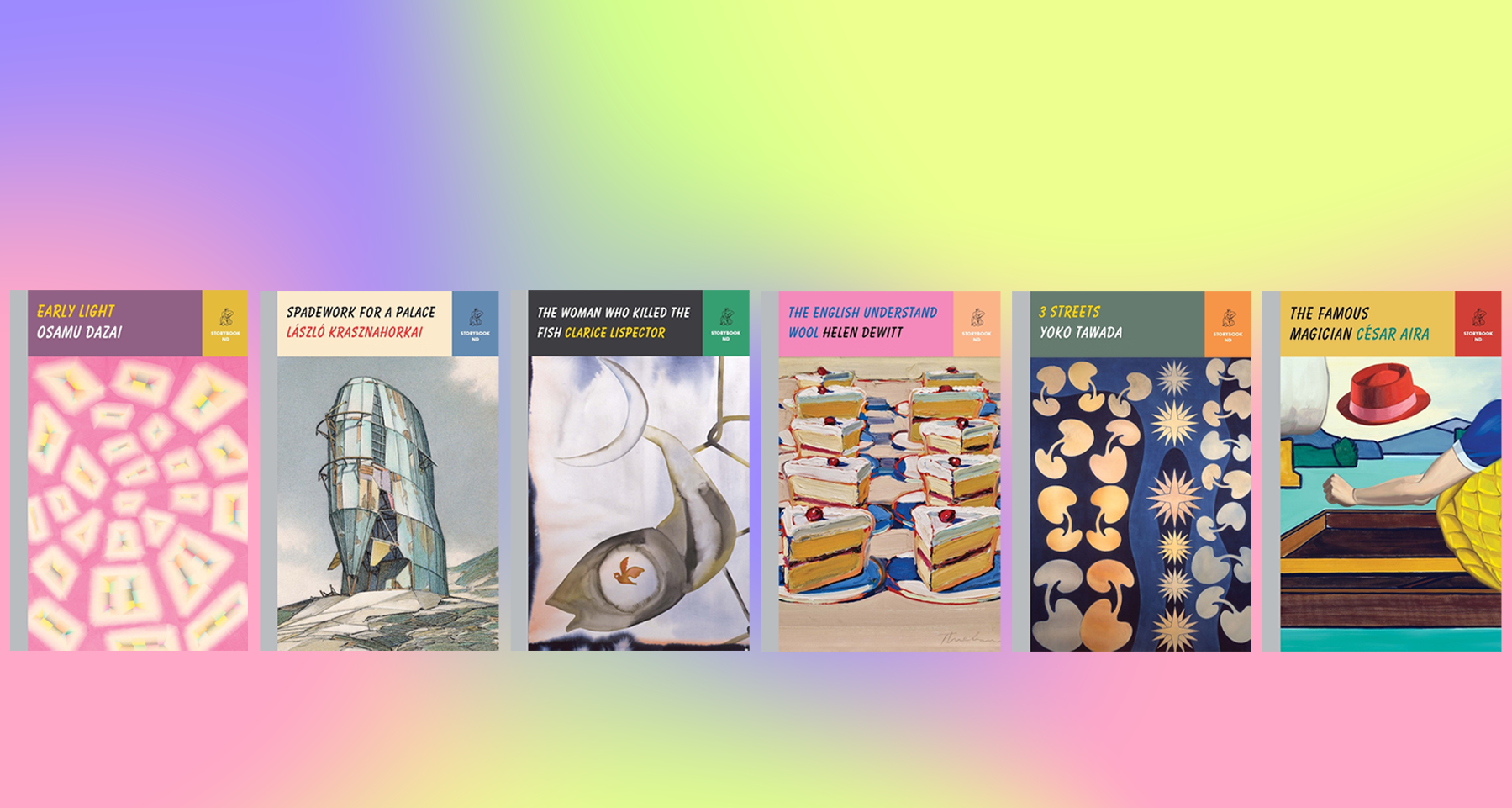Storybook ND, by various authors and translators, New Directions, 2022
In autumn, literary publishers New Directions released a new compilation, corralled under a dreamy concept: Storybook ND offers fiction “to be seen and read for an hour or two . . . [Books] to fall into for a spell, in the space of an afternoon, or early evening, or on waking.” Curated by writer and translator Gini Alhadeff, the series introduces six “long stories or short novels” that can be read as parables, travelogues, or auto-fiction. While startlingly diverse in narrative approach, the common thread among these works seems to be the writer’s classic zeal to bridge a gulf—between life and art, flawed reality and transcendent fiction.
With each book ranging anywhere from sixty to ninety-six pages, Storybook ND currently features one original English-language story—Helen DeWitt’s The English Understand Wool—and five translated works: The Woman Who Killed The Fish by Clarice Lispector, translated from the Portuguese by Benjamin Moser; Three Streets by Yoko Tawada, translated from the Japanese by Margaret Mitsutani; Early Light by Osamu Dazai, translated from the Japanese by Ralph McCarthy and Donald Keene; Spadework for a Palace by László Krasznahorkai, translated from the Hungarian by John Batki; and The Famous Magician by César Aira, translated from the Spanish by Chris Andrews. While DeWitt’s The English Understand Wool is not a translated work, it can be read as a virtuosic reflection on aesthetic representation and translation; specifically, DeWitt illustrates how both fiction and translation, in transforming reality or a foreign context into something intelligible, can also reflect the writer/translator’s inherent bias and their latent wish to control content. READ MORE…

